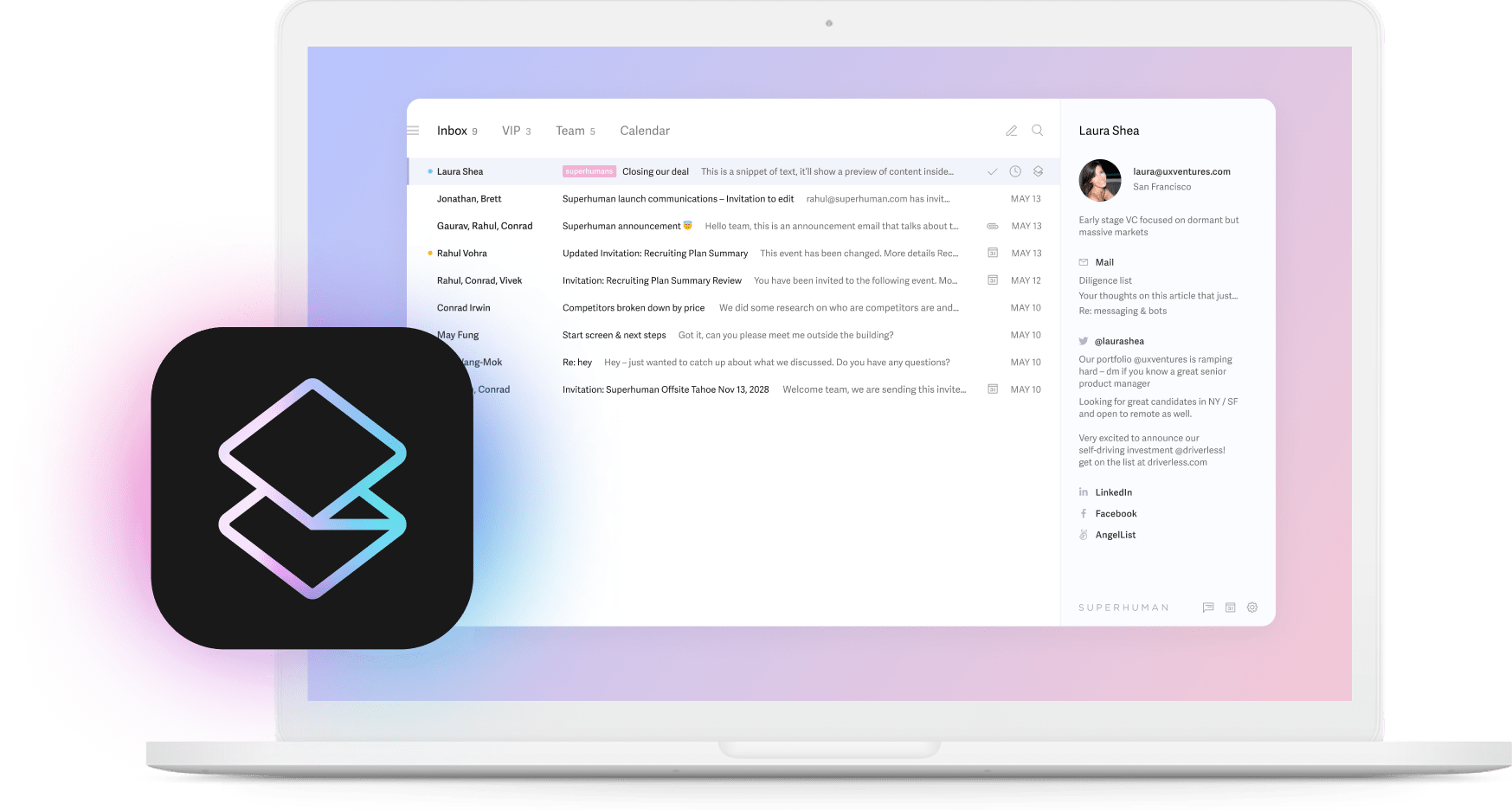
Did you know professionals waste over three hours daily on tasks that could be automated? This shocking statistic reveals the hidden productivity drain holding your team back. While your people get bogged down with repetitive tasks, the work that actually creates competitive advantage (strategic thinking, creative problem-solving, relationship building) sits on the back burner.
So what happens when you automate these routine tasks? Your team's capacity completely transforms. Their mental energy shifts from mundane operations to work that drives innovation and revenue.
From productivity drain to competitive edge
Automating tasks transforms how high-performing teams operate, going far beyond simply saving time.
When teams effectively automate routine workflows, they:
- Free up people to focus on creative problem-solving (you know, the stuff they actually enjoy)
- Cut process errors by up to 70 percent
- Scale operations without needing to hire an army of new people
- React faster to market changes and grab opportunities before competitors
The difference between busy work and strategic work is what separates thriving companies from struggling ones. Organizations that automate effectively gain an immediate competitive advantage because their teams have more mental bandwidth for innovation.
The evolution of intelligent automation
We've come a long way from basic automation tools. Today's intelligent workflow platforms learn and adapt to what your team actually needs.
Modern automation platforms like Superhuman go beyond executing fixed sequences. They:
- Study patterns in your workflow like a helpful detective
- Anticipate what your team needs next
- Get smarter the more you use them
- Create intelligent workflows, not just robotic task sequences
- Bring your team together while surfacing insights you never had before
These AI-native tools represent the new generation of automation that transforms how knowledge workers get things done. Recent advancements in Superhuman AI showcase this evolution toward systems that actually understand what you're trying to accomplish.
Building a compelling business case
The true value of automation comes from business outcomes rather than technical features. To get buy-in for AI-native task automation, you need a simple ROI story that makes sense.
Quantifying the business impact
Here's the easiest ROI calculation you'll ever make: Time saved × hourly rate = direct cost savings
Let's say an automated email workflow saves five hours weekly per person, and their loaded hourly rate is $75:
- 5 hours × $75 = $375 weekly savings per person
- For a team of 10, that's $195,000 back in your pocket every year
High-performing teams often win back more than 20 hours weekly through smart automation. That's half a workweek!
When building your business case, consider additional metrics:
- Error reduction rate
- Throughput increase
- Cycle time reduction
Beyond efficiency: Strategic advantages
Money saved is a great start, but understanding the difference between being effective vs. efficient shows that qualitative benefits often deliver even greater value:
- Mental energy preserved: When you automate routine decisions, you save brainpower for creative challenges that machines can't solve.
- Everyone on the same page: Automated workflows keep processes consistent across your team.
- Happier people: Team members consistently report feeling more satisfied when they can focus on meaningful work.
- Lightning-fast responses: Customers love it when you respond instantly through automated systems.
The ROI of intelligent email automation
Superhuman shows what intelligent automation ROI looks like in practice. Their AI for email automation combines AI, keyboard shortcuts, and workflow automation to make email feel good again.
Teams using Superhuman:
- Save four hours per person every single week
- Reply 12 hours faster
- Handle twice as many emails in the same amount of time
For knowledge workers earning $100,000+ annually, that translates to thousands in productivity gains for each person on your team.
The quality-of-life improvements are just as impressive:
- Less mental ping-pong between tasks
- Higher quality communications
- Faster response cycles
- A reputation for being extraordinarily responsive
Identifying high-impact opportunities
To be effective at work, you need to figure out which processes will give you the biggest bang for your automation buck.
The automation opportunity matrix
Look at potential automation candidates through these four lenses:
- Frequency: Something you do daily (like email) has much greater automation potential than a quarterly report.
- Complexity: Tasks with clear patterns are automation-friendly. If every case is wildly different, it's harder to automate.
- Time Commitment: Tasks eating huge chunks of time offer bigger potential savings.
- Business Impact: How much does this process directly affect your core business results?
The key to successfully automating tasks lies in choosing the right ones first – those frequent, predictable activities that consume significant time and directly impact your business outcomes.
Email management: The ultimate automation opportunity
Email management stands out as perhaps the perfect candidate for automation:
- The average professional burns through 28 percent of their workday just on email
- Messages have predictable structures ideal for intelligent processing
- Poor email management directly affects customer satisfaction and employee productivity
Learning how to turn emails into tasks makes your workflow even smoother. For people drowning in high-volume inboxes, Superhuman's approach recognizes that email is everywhere, devours time, and follows patterns that smart automation can handle beautifully.
Department-specific automation priorities
Different departments typically have their own automation sweet spots:
- Marketing: Email campaigns, social scheduling, content distribution, marketing automation software, and automated email campaigns within a cohesive email marketing strategy.
- Sales: Lead qualification, follow-up sequences, proposal generation — while keeping the perfect balance between automation and human connection.
- Finance: Invoice processing, expense checking, budget reconciliation
- Client Services: Support ticket routing, response templates, follow-up scheduling
Across all departments, communication workflows consistently stand out as high-impact opportunities because they happen constantly, follow patterns, eat up time, and directly affect how people experience your company.
Selecting intelligent automation solutions
Finding the right tools requires smart evaluation. The market offers plenty of options, but discovering solutions that genuinely transform how your team works takes careful consideration.
Categories of automation platforms
Automation tools range widely in their intelligence:
- Rule-based Systems: Basic automation that follows simple if-then logic
- Workflow Automation Platforms: Middle-tier solutions that connect apps and handle multi-step processes
- AI-native Automation: Advanced solutions that learn from behavior and adapt as conditions change
- Specialized Domain Tools: Purpose-built automation for specific business functions
Strategic evaluation framework
When choosing automation solutions, look at these crucial factors:
- Plays Well With Others: Will it connect seamlessly with your existing tools?
- Gets Smarter Over Time: Does the solution learn and improve as you use it?
- Brings People Together: Great automation enhances how your team collaborates
- Actually Delivers Value: Look beyond time savings to total business impact
- Grows With You: Make sure the solution can expand as your team does
Superhuman: Intelligent email workflow automation
Superhuman stands out in the email automation world. Unlike general-purpose tools, it transforms how high-performance teams handle email from the ground up.
What makes Superhuman different:
- AI-native intelligence: The platform learns from your email patterns to highlight what actually matters
- Speed-obsessed design: Built for lightning-fast responses with clever keyboard shortcuts
- Workflow integration: Integrates with your calendar, notes, and task systems
- Adapts to you: Molds to your personal work style instead of forcing you into rigid systems
Auto Labels automatically sort incoming messages, moving marketing, cold pitches, and social updates out of your primary focus, so you can concentrate on what truly deserves attention. Auto Drafts ensure timely follow-ups by automatically creating reply drafts for emails that need responses.
Try SuperhumanDesigning intelligent workflows
Turning manual processes into automated systems requires thoughtful design that balances efficiency with human judgment. Learning how to develop workflows that energize your team is key.
From manual process to intelligent workflow
When converting a manual process to an automated one, start by mapping out your current workflow. Document every step, decision point, and outcome.
The most effective automation doesn't just clone what you're already doing. It reimagines the whole process. Ask yourself: "If we were building this from scratch with today's technology, how would we design it differently?"
Trigger-action mapping for maximum impact
The foundation of any smart workflow consists of clearly defined triggers and corresponding actions. Triggers are events that kick off automation, while actions are what your system does in response.
For collaboration processes, good triggers might include document uploads, new comments, or approaching deadlines. Each trigger should start actions that move work forward without unnecessary human intervention.
Building intelligence into automation
True intelligence in automation comes from building in learning capabilities and contextual awareness. Your workflows should get smarter over time by:
- Gathering data on how processes perform
- Adapting to recognize patterns and exceptions
- Prioritizing tasks based on what's been most important historically
- Suggesting improvements to the workflow itself
Safeguards & human oversight
Even the smartest automation needs appropriate human guidance. Build workflows with strategic checkpoints where human judgment adds real value.
Set up safeguards like maximum approval thresholds (e.g., "never auto-approve purchases over $1,000"), alerts for unusual patterns, and simple override options for when the automation gets it wrong.
Implementation strategy for high-performance teams
A structured approach to implementing automation tools ensures maximum adoption with minimal disruption.
Pilot testing & validation
Start with a controlled pilot phase before rolling out to everyone:
- Pick a diverse test group of 3-5 team members
- Set clear success metrics before you start
- Document your baseline performance (the "before" picture)
- Create a feedback loop with regular check-ins
- Adjust your setup based on what you learn
Change management for adoption
Resistance to new tools is totally normal, but you can manage it effectively:
- Talk about the purpose and benefits, not just features
- Address "will this replace me?" concerns directly
- Give extra support to people who seem reluctant
- Showcase early wins from your pilot group
- Involve team members in decisions wherever possible
Measuring business impact & optimization
Accurately measuring office output helps validate your investment and spot opportunities to make things even better.
Critical success metrics
Focus on these key measurements:
- Time savings: How much less time does it take to complete tasks now?
- Error reduction: How many fewer mistakes are happening compared to manual processes?
- Decision speed: How much faster can decisions be made?
- Team coordination: How much better is cross-functional collaboration?
- Client happiness: What does feedback tell you about improved service quality?
Creating optimization feedback loops
Automation isn't something you set up once and forget about. To maximize value over time:
- Set up real-time dashboards for continuous monitoring
- Schedule regular reviews with key stakeholders
- Look for bottlenecks or friction points in your automated processes
- Make iterative improvements based on data and feedback
This ongoing optimization approach ensures your automation solutions grow and evolve alongside your business needs.
AI-enhanced automation: Strategic applications
AI-enhanced automation represents a fundamental leap forward in what's possible. These smart systems:
- Understand context instead of blindly following rigid rules
- Learn from past data to get better over time
- Adapt to changing conditions without constant reprogramming
- Handle complex, nuanced situations that would baffle traditional automation
Superhuman's approach to AI-enhanced email
Superhuman demonstrates intelligent workflow automation in action. Rather than just sorting messages by sender or subject, its AI understands email content, prioritizes based on actual importance, and offers smart suggestions that adapt to your communication style.
With Ask AI, you can simply ask questions like "where is the Q2 offsite" or "when is my flight," and get succinct answers from across multiple emails. This transforms 15 minutes of manual searching into mere seconds. For more on using AI to write better emails, check out their AI email writer guide.
30-day roadmap to transform productivity
Ready to transform your productivity with automation? Here's a practical 30-day plan to implement strategic automation in your organization.
Week 1: Assessment & quick wins
- Take a good look at your current workflows to spot bottlenecks and repetitive tasks
- Set up Superhuman for email workflow optimization (you'll save four hours weekly right away)
- Automate one complete workflow and measure how long it took before automation to establish your baseline
Week 2: Pilot implementation & testing
- Partner with one department to identify their specific automation pain points
- Connect your core systems using integration tools
- Build 2-3 automated workflows that bridge different applications
Week 3: Team training & expansion
- Create simple training guides for each automation you've implemented
- Identify one cross-departmental process that's ripe for automation
- Implement automation that connects multiple departments
Week 4: Measurement & optimization
- Calculate your time savings: (Manual time - Automated time) × Hourly wage × Task volume
- Survey team members about how their productivity has improved
- Fine-tune your automations based on real-world feedback
The future of intelligent work
The shift from manual processes to automated workflows represents a strategic advantage for forward-thinking organizations, extending well beyond operational improvements.
Companies that embrace an automation-first mindset will increasingly be able to:
- Direct human talent toward creative and strategic work
- Scale operations without proportional cost increases
- React more quickly to market changes and opportunities
- Deliver more consistent, error-free customer experiences
The World Economic Forum reports that while automating tasks might displace some roles, it's projected to generate more new positions than it eliminates — with estimates suggesting 97 million new jobs against 85 million displaced ones.
Today's most productive teams are already gaining competitive advantages through strategic automation. They're using tools like Superhuman to save four hours per week every week, making email feel good again while freeing up time for the work that truly matters.
The future of work is intelligent — and the time to begin automating tasks is now.






